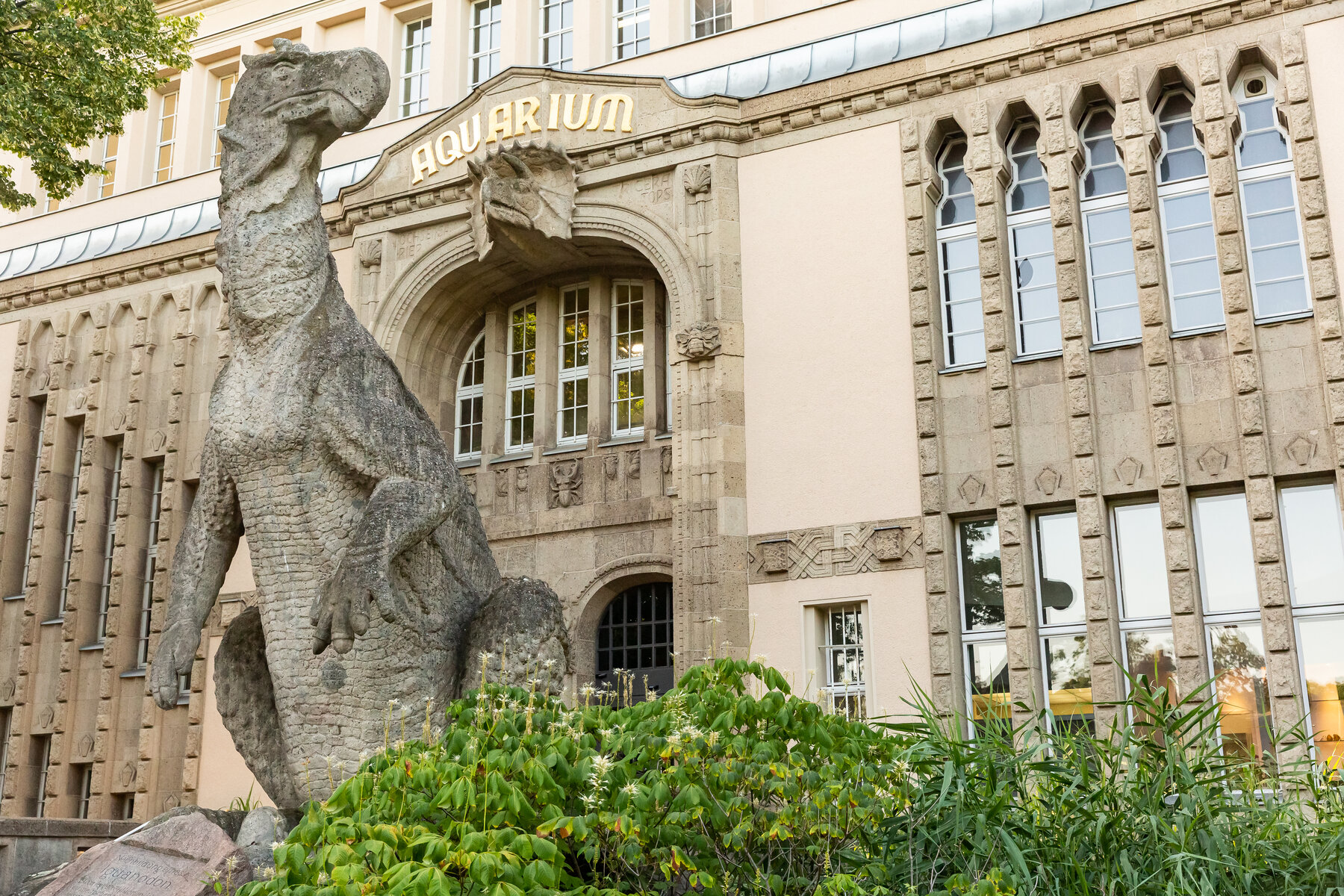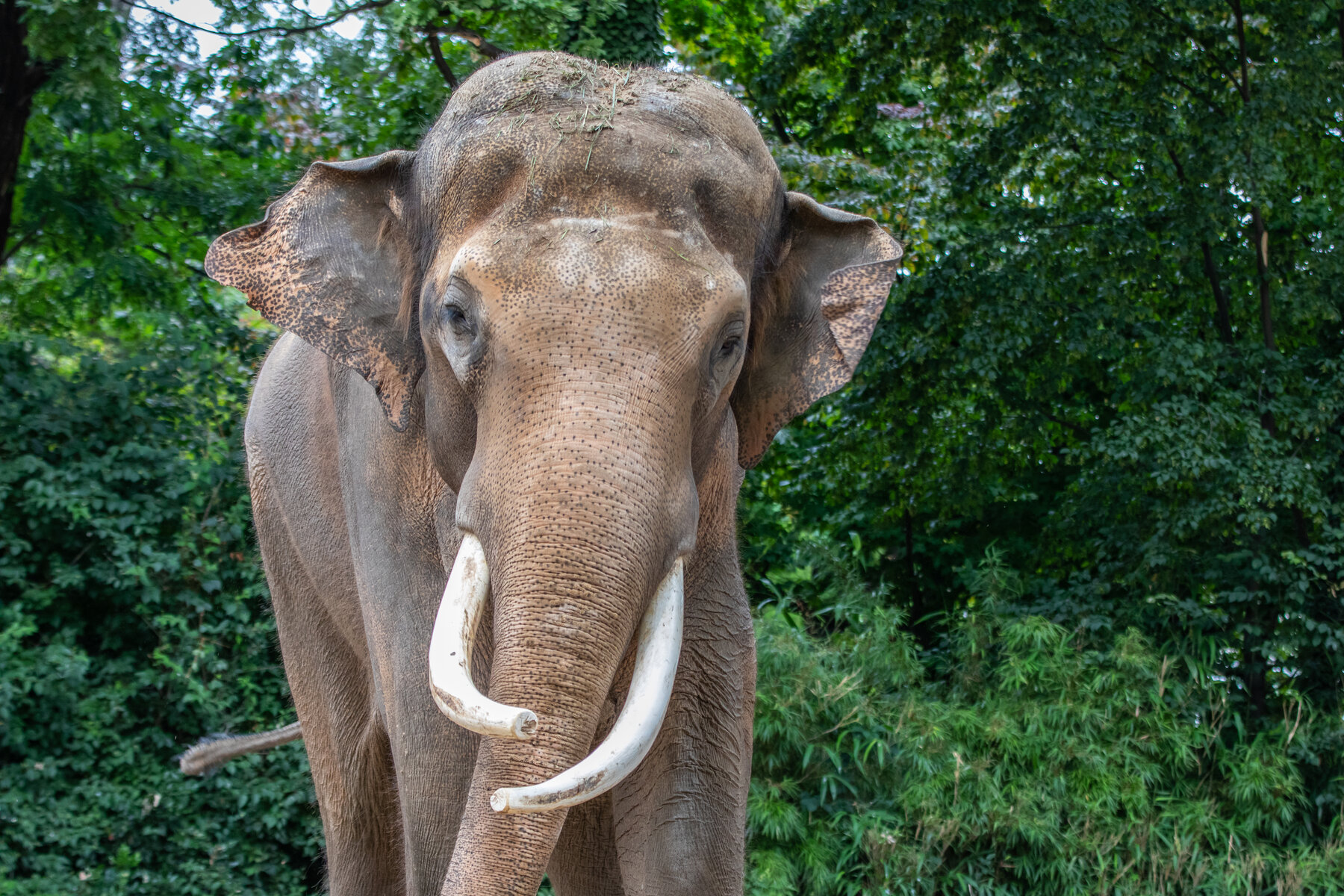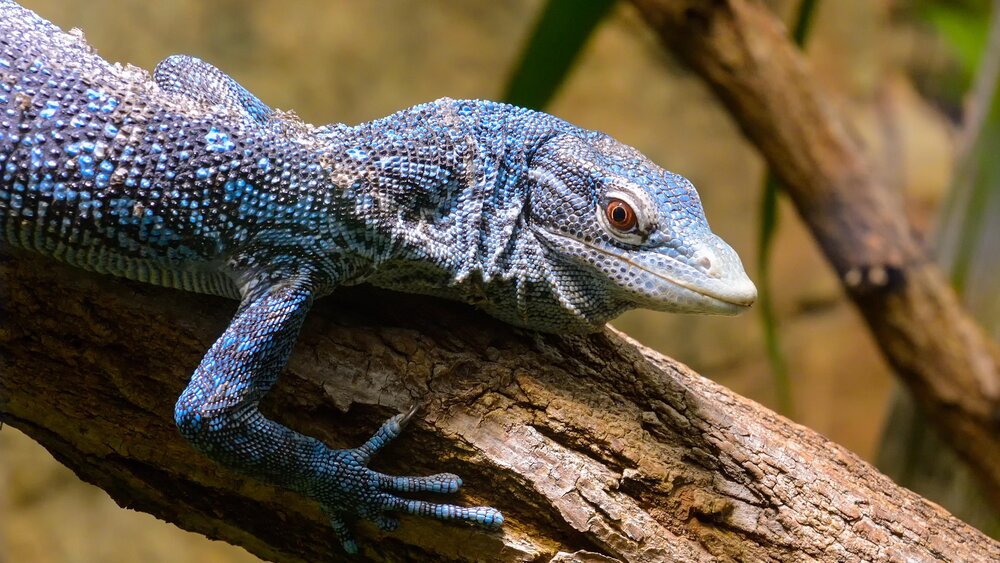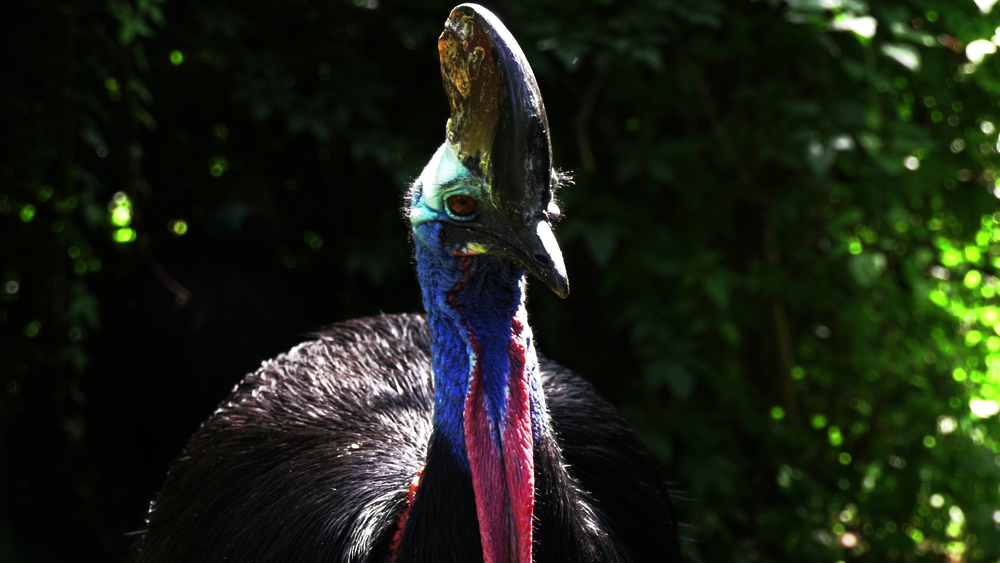Gone but not forgotten
When it comes to posthumous celebrity, species like the quagga, dodo and Tasmanian wolf have got nothing on the dinosaurs. These gargantuan prehistoric reptiles are not only brought to life on the silver screen time and again, we also constantly come across triceratops, brachiosaurs, tyrannosaurs and more as toys and figurines, in books and magazines, on rucksacks, T-shirts and numerous other consumer goods. In short: dinosaurs are everywhere. But could it be that they still exist in the flesh, too? Zoo, Aquarium and Tierpark Berlin take visitors on a journey into the realm of the dinosaurs and explore the legacy of the mighty prehistoric beasts.
Relics of prehistory
Dinosaurs roamed the Earth from roughly 235 to 65 million years ago. They were found across the entire planet – on land, in the water, and in the air. The continents back then were not separated the way they are today, and the climate was very different, too. Humans and dinosaurs never met, as the first modern humans only emerged around 300,000 years ago. But ever since the fossilised bones of these prehistoric reptiles began to be unearthed, they have exercised a powerful fascination over people around the globe.

Dinos carved from stone
At Zoo Berlin, dinosaur fans don’t have to go far to discover some fine specimens: two stone-carved beasts grace the entrance to the Aquarium, just inside the Zoo grounds. The portal is decorated with a large triceratops head, while a gigantic iguanodon stands guard outside. The iguanodon was one of the very first dinosaur species to be discovered. It got its name from its teeth, which resembled those of an iguana. The statue – which, admittedly, looks very like a dragon – was created by artists Otto August Markert, Heinrich Harder and Gustav Tornier in 1912/13. Back then, knowledge about dinosaurs was still rather limited and they were automatically lumped together with animals like tortoises and lizards.
Lizard genealogy
In the decades since then, a great many scientists have intensively studied the unearthed fossils and learned much more about the numerous dinosaur species and how they lived. When we compare dinosaurs to animals alive on Earth today, the first creatures that spring to mind are probably Komodo dragons, iguanas and other lizards, as they bear a striking resemblance to the prehistoric giants. All those reptiles can be found lurking behind the Aquarium’s impressive façade, where research continues to find out how closely related they are to the dinosaurs.
Crocodile cousins
The short answer is: it’s complicated – as family relations so often are. Scientists have carefully studied the family trees of dinosaurs and the five classes of vertebrate, and they now know much more about them. It turns out that monitor lizards and geckos don’t actually have that much in common with dinosaurs. In fact, crocodiles seem to be the only reptiles with any real family ties to the extinct giants. For instance, experts have found that, like crocodiles, dinosaurs were polyphyodont, meaning they were able to continually replace their teeth throughout their life.
Talking of teeth: take a closer look at the tree monitors next time you’re at Tierpark Berlin. The way they eat is remarkably similar to how some of the stars of Jurassic Park gulp down their meals.
A vegan diet – trend or tradition?
The fearsome-looking iguanodon was actually a herbivore, just like the triceratops. Indeed, it seems that two thirds of dinosaurs were vegetarian and would have presented no danger to humans. But gentle giants grazing peacefully on grass wouldn’t provide as much action for Hollywood movies, so the focus tends to be on the carnivores. Today, around 90 percent of Earth’s total mammal population are herbivores; flesh-eaters have always been the minority.
Record-breaking heavyweights
Alongside their lizard-like appearance, the most striking characteristic of dinosaurs tends to be their vast size. To find anything comparable among the animals in Berlin we have to leave the Aquarium and head into the Zoo. Near the Löwentor entrance lives Asian elephant bull Victor: a five-tonne stunner with a body four to five metres in length and a shoulder height of 3.2 metres. Elephants are the biggest land animals alive today – but they would still be dwarfed by dinosaurs like the Argentinosaurus, which had an estimated length of 35 metres and probably weighed as much as 100 tonnes.

“Birds” of a feather!
From heavyweights to featherweights: next, we pay a visit to the Zoo’s winged inhabitants. The faces of certain birds display a remarkable similarity to those of dinosaurs – and scientists have since discovered that birds actually descended from dinosaurs. This realisation was largely the result of the discovery of a fossil of archaeopteryx (“ancient wing”), a transitional creature between dinosaur and bird. By the way, you can admire an archaeopteryx fossil in the Tierpark’s Heron House.
A radical image change
Because of the way velociraptors have been portrayed in the Jurassic Park franchise, most of us assume these raptors were large, fierce killers that hunted in packs, were covered in typical scaly reptilian skin, and had famously long, sharp talons. But in 2007, researchers made a surprising new discovery: these dread beasts actually had feathers and were only 50 cm tall. Scientists are still unsure about the purpose of the velociraptor’s feathers. Perhaps they played a role in courtship rituals, or maybe they were simply vestiges of evolutionary history.
Worthy descendants
But there’s one feature that the revamped velociraptor still sports – the long, sharp talons. And similar examples can be found among the Zoo’s inhabitants. The cassowary, for instance, has a reputation as the world’s most dangerous bird. While the velociraptor deployed its talons to seize and hold its prey, the cassowary uses its blade-like claws in self-defence – wielding them in deadly kickboxing leaps. In any case, neither animal would make a good pet!
Gone forever?
There is one thing the animals of today share with the dinosaurs of the Triassic, Jurassic and Cretaceous periods: they fascinate us with their intriguing appearance, bizarre behaviours, and remarkable adaptations. Contrary to the fanciful claims of science fiction, we will never be able to reverse the extinction of the dinosaurs – but we CAN work hard to prevent the extermination of the many varied and wonderful species that inhabit our planet today.
One last chance
The mass species extinction we are witnessing today is largely the result of human action. Poaching, habitat destruction and climate change are driving many animals to the brink. And yet biodiversity is crucial to our own survival in the future. Nature is one big complex web of interdependencies, with different species affecting one another in a variety of ways. If strands of this web are broken, certain natural processes cease to function properly. Every time a plant or animal species becomes extinct, it takes others with it. Human beings are part of that complex web, just like all animal and plant life. That is why Zoo, Tierpark and Aquarium Berlin are working hard to protect threatened species and prevent them from becoming creatures that only exist on the big screen, like the dinosaurs. Find out how YOU can help here

